
by Dr. Chris Mah, National Museum of Natural History, Smithsonian Institution
July 23, 2017
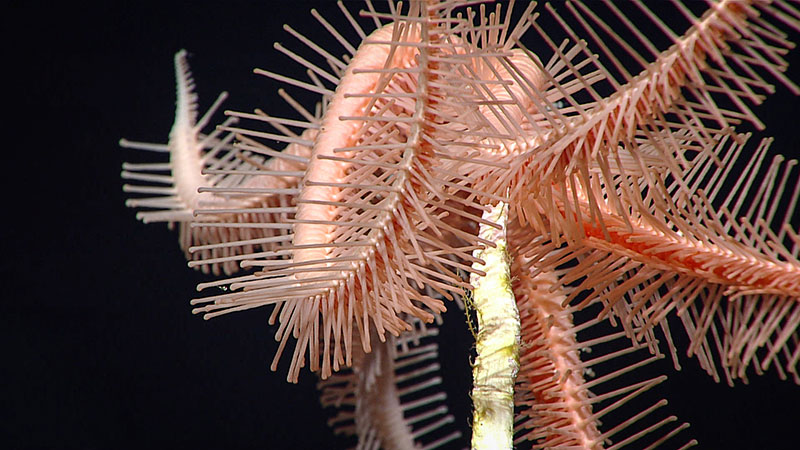
Brisingid sea star using pedicellariae-covered spines. Image courtesy of the NOAA Office of Ocean Exploration and Research, 2017 Laulima O Ka Moana. Download larger version (jpg, 1.4 MB).
Probably one of the best things about working with NOAA Ship Okeanos Explorer has been the ability to observe deep-sea sea star species alive and in their natural habitat. This permits us to observe how anatomical features function when the animal is interacting with its surroundings. Unlike features such as teeth on vertebrates, which humans actually possess, it can be difficult—if not impossible—to infer the function of such a structure without seeing it used by a living animal.
One such structure within sea stars is called a pedicellaria. In some species, such as brisingids and their relatives (such as the shallow-water Asterias), pedicellariae are claw-shaped and occur on stalks in clusters or in dense aggregations. Sea stars, such as brisingids, are covered with pedicellariae and use them in order to capture food. I’ve referred to pedicellariae as “deadly velcro” during the live stream because they cover the elongate spines emerging from the many arms of brisingid asteroids and are used by these animals to capture tiny swimming crustaceans.
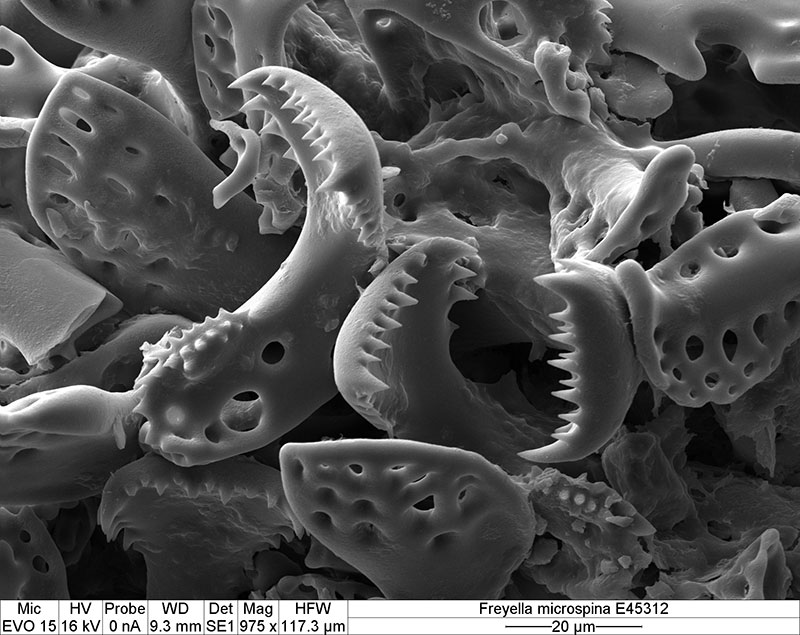
Each brisingid pedicellariae jaw is about 0.4 millimeters (0.02 inches) across. Hundreds of millions of these are present on each spine, forming the “death velcro.” Image courtesy of Bob Ford and Chris Mah. Download larger version (jpg, 1.5 MB).
In the Atlantic, I’ve watched NOAA Ship Okeanos Explorer video showing brisingids holding small fish following their collision with the “death velcro.”
Recent observations on this cruise have given me a wonderful opportunity to observe these structures in action on another group of living sea stars—the coral and cnidarian predators within the Goniasteridae.
One of the most dramatic moments observed was while we were viewing the underside of the coral-devouring species Hippasteria muscipula, which I described only a few years ago .
The species name “muscipula” refers to the flytrap-like shape of the pedicellariae on the surface of the animal pictured.
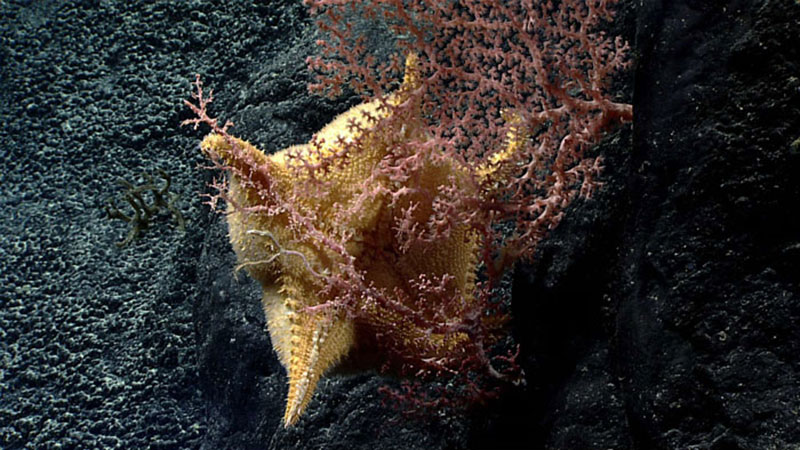
Sea star feeding on precious coral. Image courtesy of the NOAA Office of Ocean Exploration and Research, 2017 Laulima O Ka Moana. Download image (jpg, 123 KB).
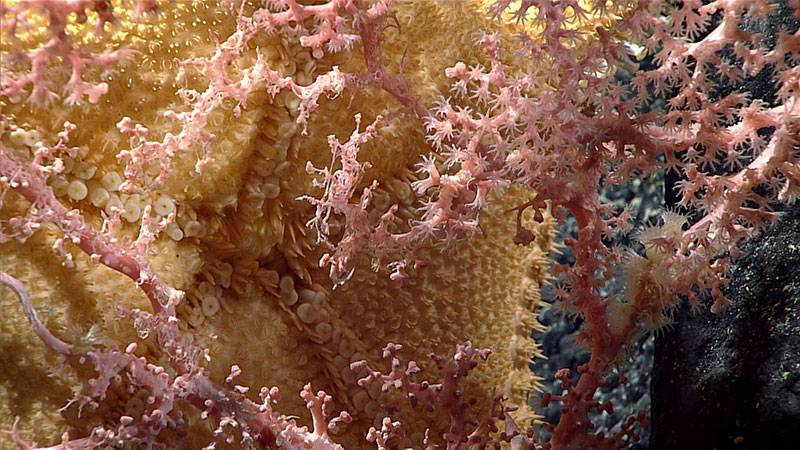
Close-up view of pedicellariae in action. Image courtesy of the NOAA Office of Ocean Exploration and Research, 2017 Laulima O Ka Moana. Download map (jpg, 1.6 MB).
Here we saw these large pedicellariae IN ACTION! They were opening and closing like giant beaks as it fed on a Hexacorallium precious coral. This suggests that these structures may be involved with feeding as the animal attacks these corals for food.
A similar type of observation was made on another goniasterid just recently. This new species of Evoplosoma was observed with its top surface covered by pedicellariae (the lip-shaped and triangular structures on the surface). It was very near a deep-sea colonial octocoral known as a “rock pen,” upon which it was most likely going to feed.
These types of pedicellariae have been observed in motion in association with predation. Although I haven’t yet observed them actively participating in feeding, they do suggest a role—possibly for defense? Or as assistance in feeding on corals?
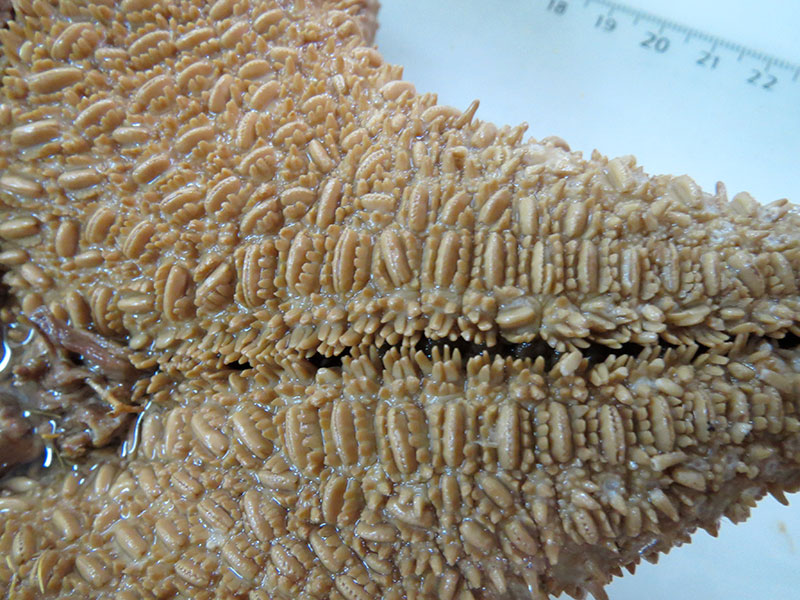
Clam-shaped structures are pedicellariae. Close up from a museum specimen. Image courtesy of Chris Mah. Download image (jpg, 4.1 MB).
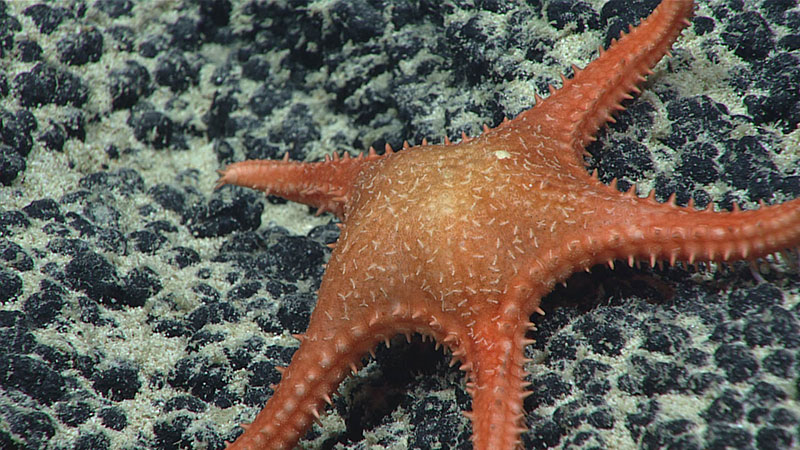
The top surface of this new species of Evoplosoma is covered by pedicellariae. Image courtesy of the NOAA Office of Ocean Exploration and Research, 2017 Laulima O Ka Moana. Download map (jpg, 1.4 MB).
Will these structures be important in understanding how these sea stars predate upon deep-sea corals?
These observations, while not definitive, are a great deal more than what we’ve had—largely made possible by NOAA Ship Okeanos Explorer. This is one of the many reasons that ocean exploration is so fascinating and exciting. I’m certain there will be more to follow!